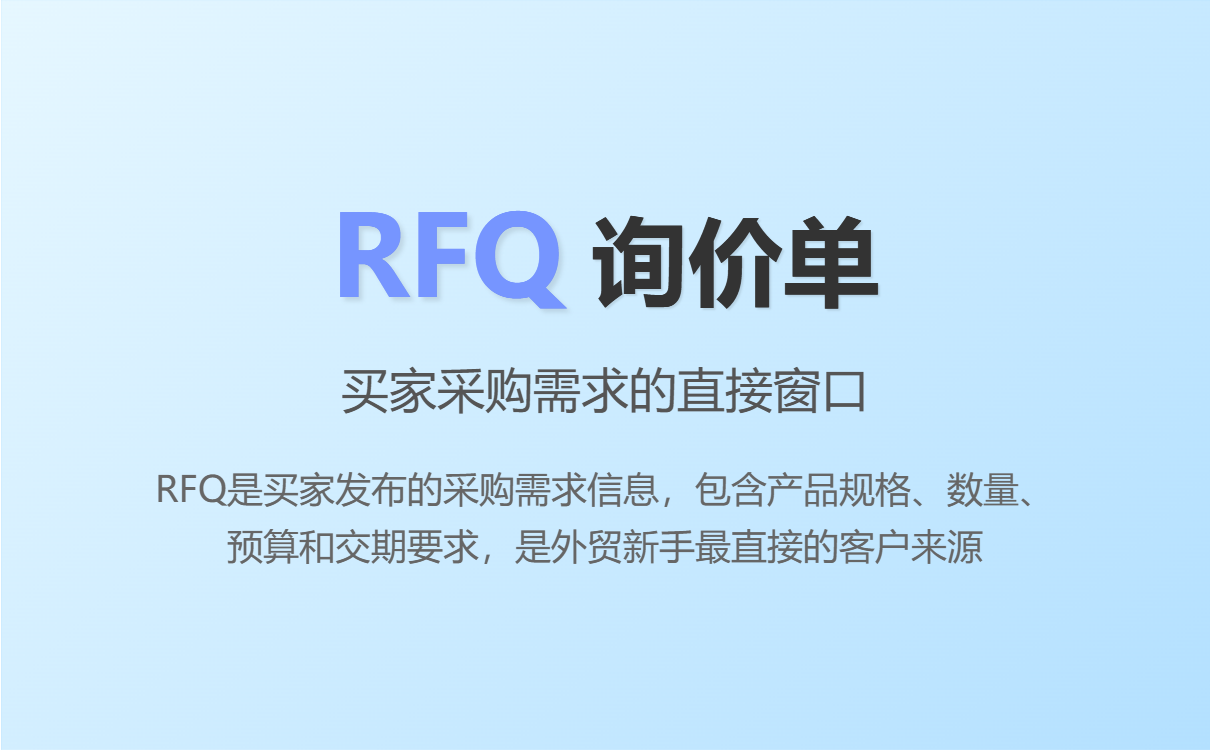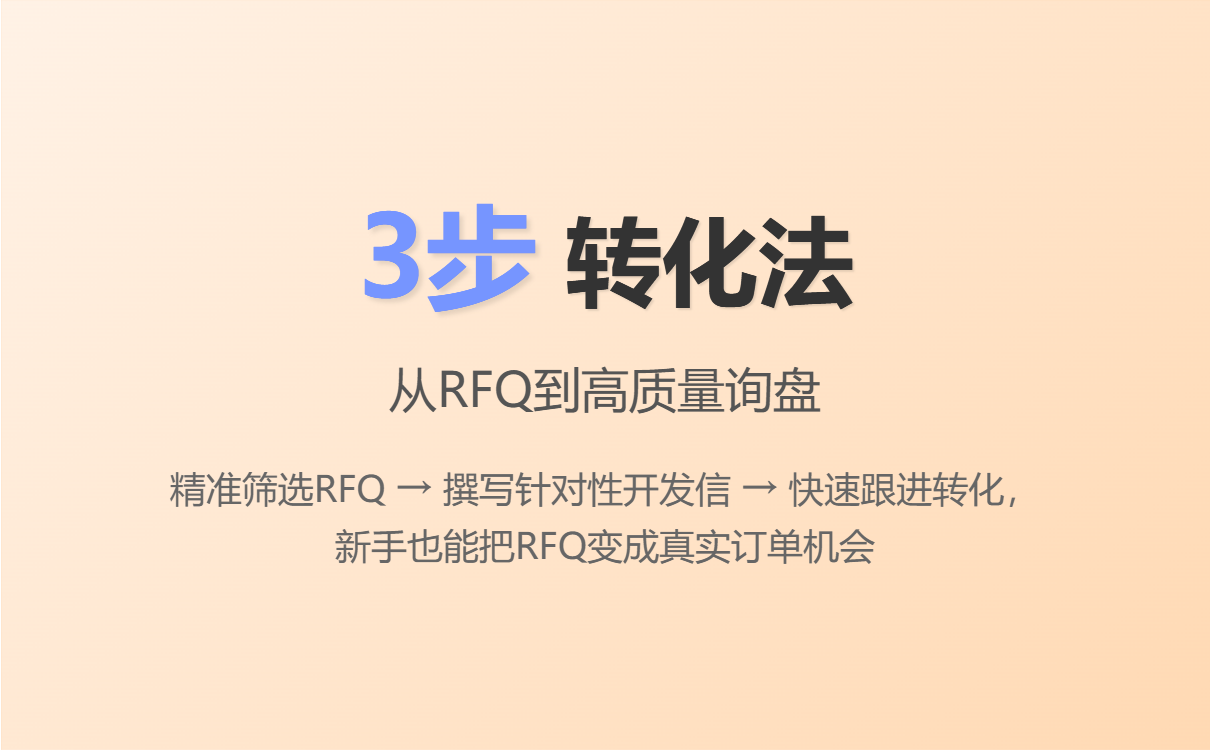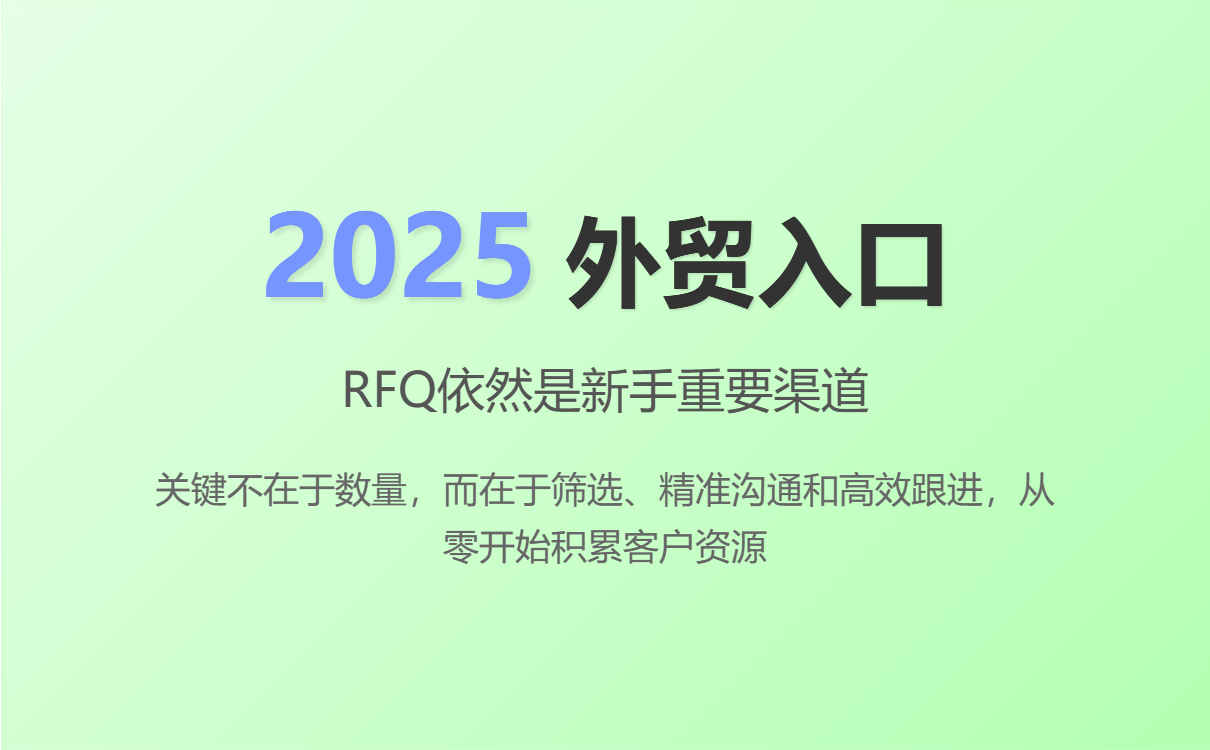
As a newcomer to foreign trade, you've undoubtedly heard of RFQs (Request for Quotation) and may have seen thousands of RFQ messages on B2B platforms like Alibaba.com, Made-in-China, and Global Sources. However, many people ask: Will RFQs still be effective in getting orders in 2025? As a beginner, can I secure high-quality orders using them? Recommended reading: How to Calculate Foreign Trade Quotations and Costs? One Article to Teach You~
The answer is: yes, but the method is crucial . As long as you master the correct operating procedures, RFQ remains a powerful tool for acquiring orders. Below, I'll break down the system for you from a beginner's perspective.

RFQ, short for Request for Quotation , is a procurement request form posted by buyers on B2B platforms. It typically includes the following:
Product name, model, specifications
Expected purchase quantity
Target price or budget
Delivery time requirements
Contact information or internal platform messaging channels
In layman's terms, an RFQ is a buyer saying, "I want to buy this product. Tell me the price, delivery time, and terms."
Quickly obtain buyer information
RFQs contain buyers' clear needs and contact information, making them the most direct source of potential customers for foreign trade novices.
Judging market trends
By reviewing the RFQs of similar products, you can understand the common purchase volumes, price ranges, and requirements of international buyers, which can help with pricing and product strategies.
Low-cost testing products
For beginners, RFQ is a barrier-free way to start. You can reach global buyers without actively promoting or advertising yourself.
Many beginners have questions: Are RFQs for small orders or bulk orders?
Answer: Both .
Some buyers are just testing suppliers, placing small orders (tens to hundreds of pieces), which is a good time to accumulate experience and build a reputation.
Some buyers explicitly state that they are purchasing in large quantities (thousands or even tens of thousands of pieces), but they usually require the supplier to have a certain level of strength and credit.
Key point : Beginners should learn to screen for high-quality RFQs to avoid wasting time on low-intent clients.

Here, I've compiled a practical 3-step method for beginners, which is simple and easy to follow.
Not all RFQs are worth replying to; beginners especially need to learn how to filter them.
To verify a buyer's authenticity , prioritize RFQs that include company information, email address, phone number, or enterprise verification.
Match product requirements : Confirm that your products can meet the buyer's specifications, quantity, and quality requirements.
Check the purchase quantity and delivery time : If the order quantity is too small or the delivery time is unreasonable, you can temporarily give up.
Tip: Don't try to answer too many questions at once; focus on RFQs with high relevance to increase your success rate in responding.
RFQ (RFQ) outreach emails are key to turning potential customers into actual inquiries. Beginners can use the following template:
Opening: Accurately responding to buyer needs
Example: "Hello, I saw that you inquired about product XX on the RFQ. Our company happens to manufacture this type of product."
Middle: Showcasing strength and advantages
Product features, quality assurance, factory qualifications
Images, certifications, and case studies can be attached.
Conclusion: Clearly define the call to action
Provide a quotation, samples, or communicate via Zoom/WhatsApp.
Use a phrase like "Please reply to my email/platform message to get the latest quote and samples".
Tip: Keep your outreach emails concise and targeted. Avoid using templates and demonstrate professionalism.
Respond promptly : Try to reply to the buyer's reply within 24 hours.
Proactively provide solutions : This includes not only price, but also delivery time, packaging, and after-sales service.
Follow up through multiple channels : If the buyer does not respond on the platform, try to contact them via email, WhatsApp or LinkedIn (pay attention to politeness and frequency).
Build trust : Showcase product details, customer case studies, or provide samples to increase customer trust.
Key takeaway: RFQ is just the starting point; quick follow-up and providing solutions are the core of conversion .

RFQ screening : Quality is more important than quantity; prioritize RFQs that are genuine and highly relevant.
When writing a sales email , address the customer's needs, highlight your strengths, and clearly state your next steps.
Rapid follow-up : Prompt responses, providing solutions, and building trust.
Master these 3 steps, and even foreign trade novices can turn RFQs from "massive amounts of information" into real order opportunities .
In 2025, RFQs will remain an important entry point for novice foreign trade professionals. The key is not in how many RFQs you send out each day, but in the selection, precise communication, and efficient follow-up . By following the three steps in this article, beginners can start from scratch, turning RFQs into high-quality inquiries, and ultimately accumulating orders and customer resources.
.png?x-oss-process=image/resize,h_100,m_lfit/format,webp)
.png?x-oss-process=image/resize,h_100,m_lfit/format,webp)

.png?x-oss-process=image/resize,h_100,m_lfit/format,webp)
.png?x-oss-process=image/resize,h_100,m_lfit/format,webp)
.png?x-oss-process=image/resize,h_100,m_lfit/format,webp)
.png?x-oss-process=image/resize,h_100,m_lfit/format,webp)
